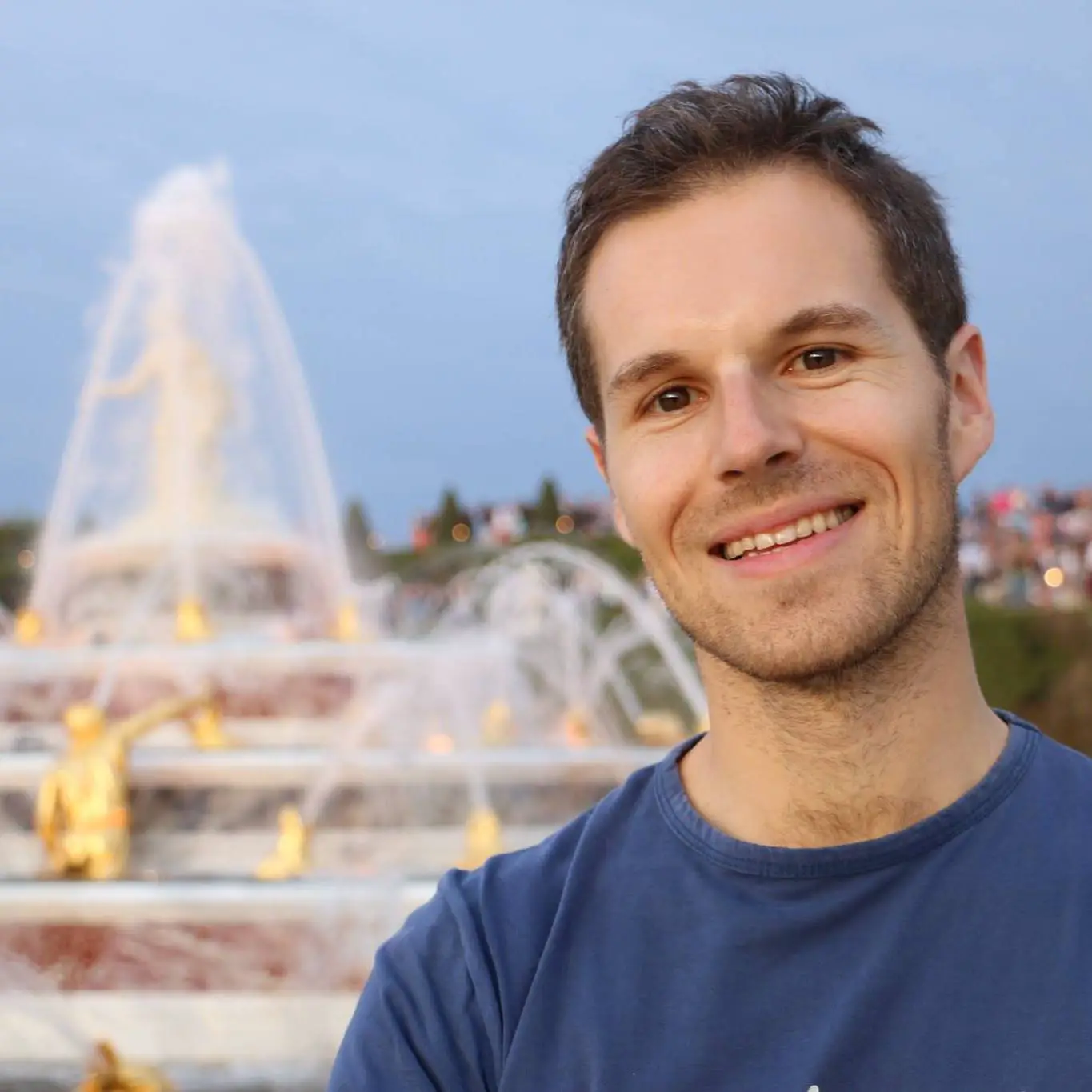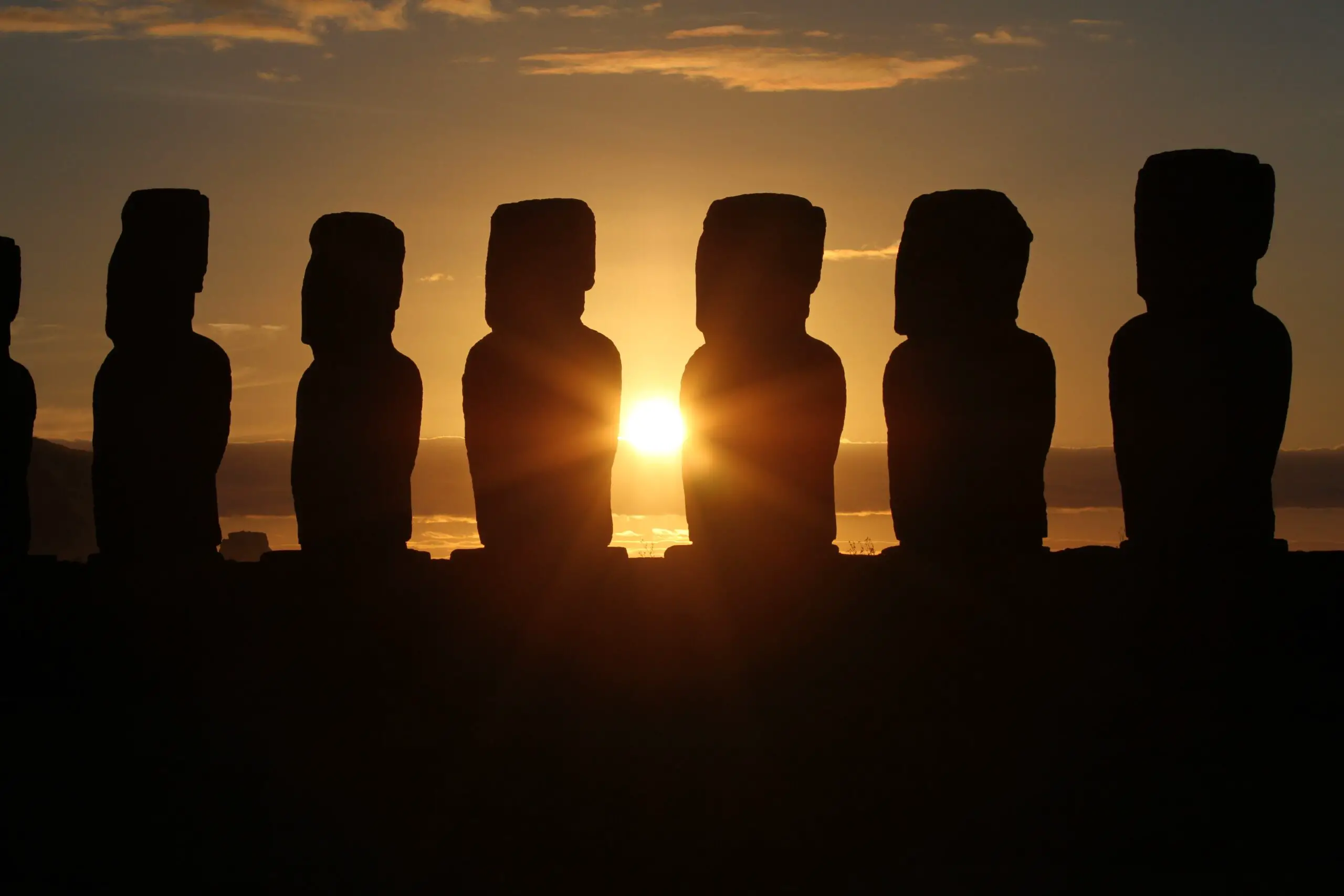Easter Island is one of the most remote places in the world. Located over 3,500 kilometers away from the Chilean mainland, it can only be reached by plane from Santiago, and from French Polynesia. The island is actually part of the Polynesian culture, so don’t be surprised to be received at the airport with flower necklaces!
The island is called Rapa Nui in local language, which is still used by the locals. The word “iorana” is the only one you will need to understand: It means “hello”. For the rest, they all speak Spanish since Easter Island belongs to Chile. And as Rapa Nui lives mostly from international tourism, you should have no problem getting by with English.
Table of Contents
Why go there?
Now, why would you travel all the way to this tiny island, far from everything, and expensive to get to? Well, there are many good reasons to do so. Some of them are very well-known, some others, a bit less. Here there are, one by one:
The moais
Of course, these hundreds of enigmatic statues made of volcanic stones are the main reason to come visit the island. Made of just one piece of rock each, they are gigantic (the largest ever made is 20 meters long!) and quite impressive to see. They are also very unique: there is nothing else like them on Earth. I’m not gonna delve into History here, but the moais are still full of mysteries for archeologists, with many different theories surrounding the big statues – some of them quite wild, as you can read below.
The spiritual feel
Here is a far-fetched theory: Some people believe that Rapa Nui is a portal to another universe, and that the moais represent gigantic aliens who would have come to the island centuries ago. There are also many legends regarding good and bad spirits, some protecting the habitants, some others hurting them. A couple of things are true though: some of the platforms with the moais are aligned with the stars during the solstices; and there is a special magnetism in Rapa Nui: there is one specific place where compasses get completely lost, for instance.
The dance shows
Some people say these shows are a tourist trap. I have been to several of them, and you could actually say it’s true for some of them. But there are actually some really good dance and music shows, such as this one:
Kari Kari Ballet
Probably the most interesting show in Rapa Nui, performed by one of the most established companies on the islands. They have different shows depending on the day of the week, one with a focus on the island’s History through music and dance, one with a mix of different dances from all over Polynesia… One cool thing there is that if you come early, you can get a temporary henna tattoo. But don’t book the dinner with the show: the food is too expensive for what it is.
Great scuba diving
Rapa Nui is famous for its clear water. And with the island’s subtropical climate, you will have the opportunity to see plenty of colorful fish, and even sea turtles – depending on the season. There is also snorkeling if you don’t know how to dive or don’t feel confident enough. There are different scuba sites, for beginners and for more experienced divers as well. Orca Diving Center, founded by an ex-sailor from the famous Captain Cousteau’s team, is the most reputable diving company on the island.
The beautiful landscapes
While Rapa Nui is not famous for its landscapes, it is actually quite beautiful: lush, green, with many craters (the island is 100% volcanic) such as the impressive Rano Kau (picture below), a scenic rocky coastline, volcanic caves, blue ocean… And of course, there is the gorgeous beach of Anakena, where you will find a unique combination of clear water, white sands, coconut trees AND statues right there on the sand! If you go in the morning around 11am, the water is already warm enough to bath, and you might have the beach for yourself!
The food
Rapa Nui’s specialties include the Tuna empanada, lobster cooked in butter, ceviche, Tunu Ahí (fish cooked on a hot stone), and the local version of the Chilean curanto. Sweet potatoes are also cultivated locally. There are also some great fruits such as pineapple, guava, and a local variety of banana that is tiny and delicious. Oh, and they have delicious fresh juices made of these tropical fruits!
Tapati, 15 days of cultural festival
Tapati is a cultural festival that takes place every year in February, during the Austral Summer. It’s one of the most important events in Polynesia, which lasts for no less than 15 days. It consists of contests of all sorts: a singing competition, a traditional canoe race, a very peculiar version of triathlon, horse races, among others. All of these contests and shows are part of the Rapa traditions. If you go there during Tapati, here is what you don’t wanna miss:
- Inauguration night: The festival starts with this long ceremony in open air, below the stars. The two teams that will compete during 15 days will show their respective skills with typical dance and music. Tourists can participate in the show as well.
- Triathlon: Instead of swimming-biking-running, the Rapa Nui Triathlon consists of rowing across a lake, then running around it while carrying a banana bunch under each arm, and finally swimming across the lake.
- Haka Pei (picture below): This is a very unique and spectacular contest that you might have seen on TV: it consists of riding down a steep hill while lying down on a sled made of banana leaves. They can reach up to 80 kilometers per hour!
- Singing and dancing contests: There are several of them, individuals and groups, and they take place every night during the festival. The group dance and the choirs contests are probably the most impressive.
- The parade: On the 14th night of the festival, comes the big parade with floats, adornments and traditional costumes in the streets of Hanga Roa. Tourists can dress with traditional costumes and wear body paintings and take part in the parade as well.
- The coronation of the queen: On the last night, comes the coronation of the Queen of the festival. This serves as the closing ceremony, with all the contestants gathered on a large stage with music, dance, food and fireworks.
Avoid Tapati unless you REALLY want to see it!
If you are not really, really interested in this kind of cultural event, don’t come at that time of the year! Indeed, this is the time when the island is the most crowded with tourists, and everything is very expensive, from plane tickets to hotel rooms – even camping sites. Besides, you need to book everything months in advance – typically everything is booked or sold out six months before the festival. But if you can make it (and afford it), it’s actually really worth it!
Important tips
Bring bug repellent.
It’s not necessarily against mosquito bites, but more for the bugs in your room. Therically it’s not allowed in planes, but if you buy a tiny bomb and put it in your checked luggage, that shouldn’t be an issue. If you prefer to play it safe, bring one of these electrical repellent (however, that will probably not work against big bugs like cockroaches, which you may see a lot on the island – even in the best hotels: even with the best cleaning staff, these bugs are just everywhere). Most shops sell bug repellents on the island too.
Bring food!
One of the most surprising things you will see as soon as you arrive on the island, is the type of luggage people bring with them: large coolers, boxes filled with food… The reason is simple: food items are very expensive on the island, two to five times more expensive than in Santiago! So if you plan to cook for yourself, pack some basics like rice, noodles, canned food, bread, cereal and cookies, among others. Even tea or coffee, salt and sugar if you have space can be a good idea!

Avid traveler, journalist and writer, he moved away from his native France back in 2006 and settled in Chile. After visiting the country North to South, learning extensively about its culture, History, gastronomy, Thomas started to work as a tour guide. He liked it so much that he ended up creating his own tour agency in Valparaiso, where he lives today. You can visit my site at: https://chileprivatetours.com/
